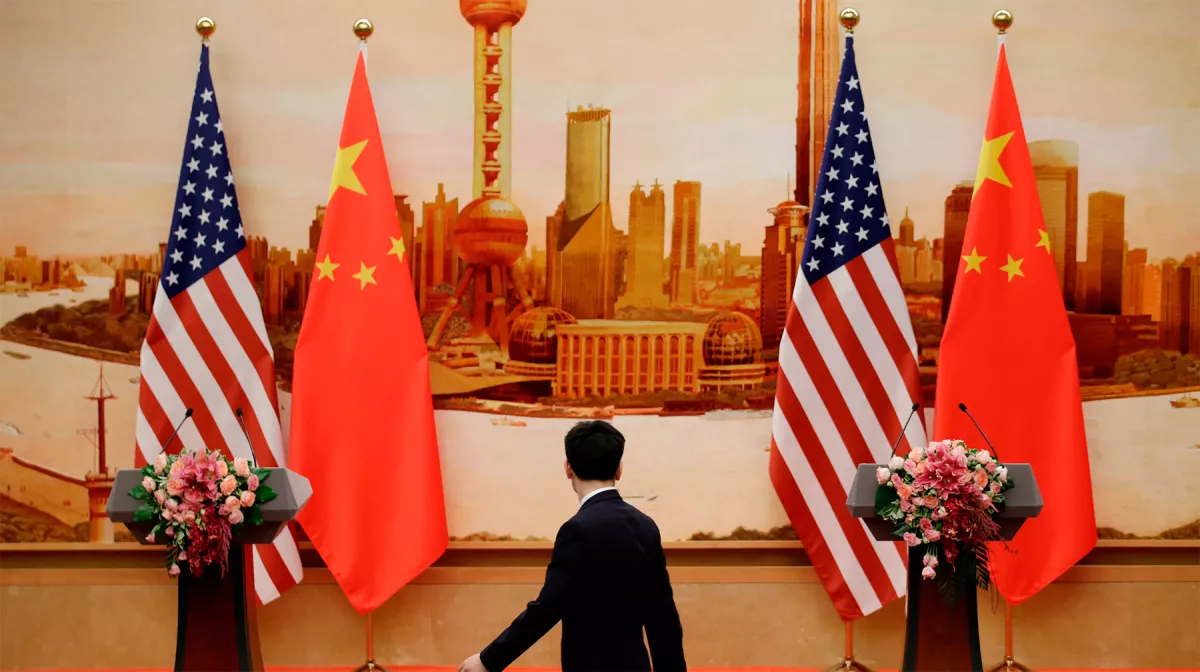China vs. US: A stalemate on the brink of crisis
In a recent analysis, Foreign Affairs explores how the balance of power between the two superpowers has shifted, with Beijing’s rising confidence and military buildup posing an escalating risk of conflict, particularly over Taiwan.
According to the article, in a landmark moment in 2021, Chinese diplomat Yang Jiechi told senior U.S. officials that China could no longer be approached from a “position of strength.” This declaration marked the beginning of a significant shift in China’s strategic outlook, signalling an emerging confidence that the balance of power between the U.S. and China was undergoing a transformation. Fast forward four years, and Beijing now sees itself as on the cusp of achieving parity with Washington. Bolstered by advancements in military, industrial, and technological capabilities, China believes it is entering a “strategic stalemate” with the U.S., in which both powers now exert comparable global influence.
Despite U.S. President Donald Trump's re-election and his confrontational stance on trade, Beijing remained optimistic about its position in the global power struggle. The Chinese leadership interpreted U.S. actions as accelerating its own decline, particularly in terms of global authority, military readiness, and economic clout. This growing optimism in Beijing has led to a patient yet assertive foreign policy, with China positioning itself to gradually outpace the U.S. on the global stage.
A key area of focus for China is Taiwan. While Beijing’s Taiwan policy remains grounded in a long-term strategy of unification, a shift towards more active and aggressive methods is becoming apparent. China’s increasing reliance on diplomatic, economic, and covert methods to sway Taiwan’s population, combined with military muscle-flexing, marks a pivot in Beijing’s approach to achieving its strategic goals. Although the threat of an imminent military strike remains low, the possibility of conflict in the medium term has increased, particularly given the volatile political environment in both the U.S. and Taiwan.

For the U.S., the rise of China as a peer competitor presents a significant challenge. While the Trump administration focused on strengthening military deterrence in Asia, internal U.S. fractures and inconsistent foreign policy positions—especially on Taiwan—have weakened Washington’s ability to confront Beijing effectively. Trump’s perceived lack of commitment to defending Taiwan, combined with internal disarray at the Pentagon, leaves the U.S. poorly positioned to deter Chinese aggression. This dynamic exacerbates the growing risk of military confrontation, especially as China continues to grow stronger militarily and economically.
China’s military buildup, viewed by Beijing as a counter to U.S. influence, extends beyond Taiwan. The Chinese government has grown increasingly assertive in influencing smaller regional players and testing U.S. alliances. Its growing economic power allows it to exert soft influence while simultaneously enhancing its hard power, creating a more complex strategic environment for Washington.
The true danger lies not just in external pressures, but in internal dynamics within both nations. In the U.S., fractured leadership under Trump has eroded the ability for a unified and coherent foreign policy strategy. Similarly, China’s internal consensus around the legitimacy of its rise, bolstered by nationalism and military expansion, reduces the likelihood of introspection or reevaluation of its aggressive tactics.
As both countries hurtle toward a potential military crisis, the key to avoiding catastrophe may lie in introspection and stronger, more coherent leadership on both sides. However, given the trajectory of these internal and external factors, the possibility of the current strategic stalemate unravelling into a full-blown crisis looms ever closer.
By Vugar Khalilov








